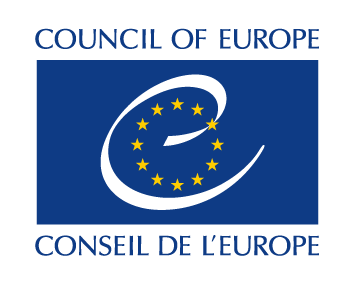The school mission statement – a whole school project
Living Democracy » Principals » LEADERSHIP » Competences for a democratic culture » The school mission statement – a whole school projectThe school mission statement – Keep it Short and Simple (KISS).
Many educational institutions and schools, but also business enterprises and government institutions use mission statements. A school mission statement is something like a business card for external partners, and a point of reference for daily work in school, a reminder for the school community of its shared vision and guideline.
A school mission statement should follow the KISS principle – Keep It Short and Simple. In a nutshell, and in a language that appeals to non-experts, it pinpoints the development perspective or key principles that define a school’s shared vision and profile. A mission statement neither explains the reasons for the choices made, nor provides any information on implementation. A mission statement should be ambitious, but the goal should not be out of reach. A mission statement is open for review, but it would lose credibility if it were changed frequently.
See
https://www.missionstatements.com/school_mission_statements.html
https://www.educationworld.com/a_admin/admin/admin229.shtml
Focus on one simple question in brainstorming
A school community is heterogeneous, bringing together two or three generations, professional educators, children and adolescents. If parents are included as well, the school community resembles a microcosm of the diversity and pluralism in society as a whole. In such modern societies, the challenge for democracy is to ensure that all citizens, regardless of their background, are engaged and understand what is on the agenda, as decision making would otherwise become the privilege of an elite of specialists.
Thus, the process of creating a school mission statement should begin with a phase of brainstorming within each group – the team of school leaders, teachers, students, and parents. For this brainstorming effort, it is important to choose one meaningful question for all groups. For a mission statement that highlights one key objective, one simple, open question is sufficient, such as “What makes a good school?” The question must allow every member of the school community to respond, based on their level of understanding and drawing on their personal or professional experience. In other words, everyone should be able to act as an expert. The school principal and staff should discuss the choice and wording of the key question, and to consider its implications for the final mission statement.
Brainstorming begins with the ideas and interests of all individuals. Thus, a wide variety of input should be expected that reflects a pluralistic community. In order to arrive at one simple statement, a process of integration and prioritizing is necessary, just as in democratic decision and policy-making. In EDC/HRE, different models show how to organize such a brainstorming process. They are suitable for students of all age groups, teachers, school leaders, and parents. As suggested above, the whole brainstorming process focuses on the same question in each group.
- Think – Pair – Share https://www.teachervision.com/group-work/think-pair-share-cooperative-learning-strategy
- Wall of silence http://www.living-democracy.com/textbooks/volume-6/chapter-7/exercise-1/
Framework for discussion and decision-making
Use the institutional framework that is in place at your school (see Preparation Handout 3.1). Otherwise follow this design to form ad-hoc groups. An elected council of teachers, students and parents, chaired by the school principal, should ultimately adopt the draft mission statement. This form of representative democracy ensures that all groups of stakeholders, regardless of their size, are equally represented. To ensure wide support for, and indentification with the mission statement, it is advisable to set a quorum of 75% oder 80% for approval (see Democratic governance of schools, CoE publishing 2007, p. 36 f).
Competences for Democratic Culture (CDC) as a school mission statement
The school mission statement should be widely appreciated in the school community. It follows that no one should feel excluded by its content due to discrimination based on age, religious belief, ethnic origin, gender, personal or group interests. The mission statement should not identify with any particular standpoint or group identity but rather emphasize key principles and an evolving perspective that can be supported by all members of the school community. We believe that CDC (see Awareness Handout 2.1) meets these criteria.
“CDC and a whole-school approach provides a valuable development perspective for schools on how to become more democratic, taking into consideration key areas of school life such as teaching and learning, school governance and culture, and co-operation with the community. In this way, development of a democratic school culture and competences of democratic culture in learners becomes a school mission.” (Reference Framework of Competences for Democratic Culture, Vol. 3, p. 96.
Outline of the discussion and decision-making process
- Brainstorming in class, parents’ and staff meetings (see details above).
- Spokespersons present their brainstorming inputs to the working group whose task is to draft mission statement. This group should include volunteers who represent all groups of the school community.
- The draft mission statement is presented to each class, the staff and the parents. Members of the draft working group attend each meeting, explain their decisions and collect feedback.
- The draft working group then discusses the feedback received and finalizes its draft.
- The school council, whether already established or formed ad hoc, then adopts the school mission statement by majority vote.
Debriefing and implementation
- The mission statement is displayed prominently on the school website, in school flyers for visitors and new parents, and on posters in the staff room and each classroom.
- With their teachers, the students discuss their experience of democratic participation in this decision-making process, linking it to the concept of democratic school culture.
- Parent’s spokespeople give feedback on the parents’ participation at a staff meeting.
- The school community discusses the next steps to implement the mission statement.

